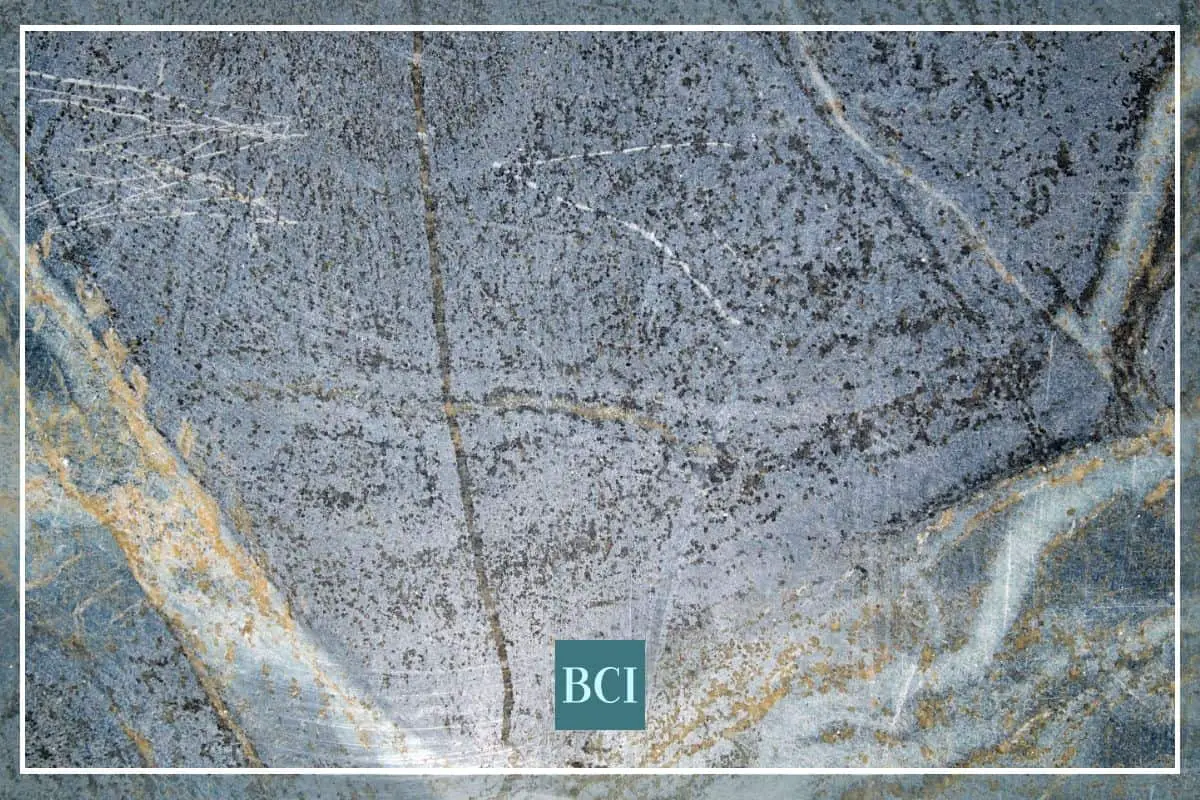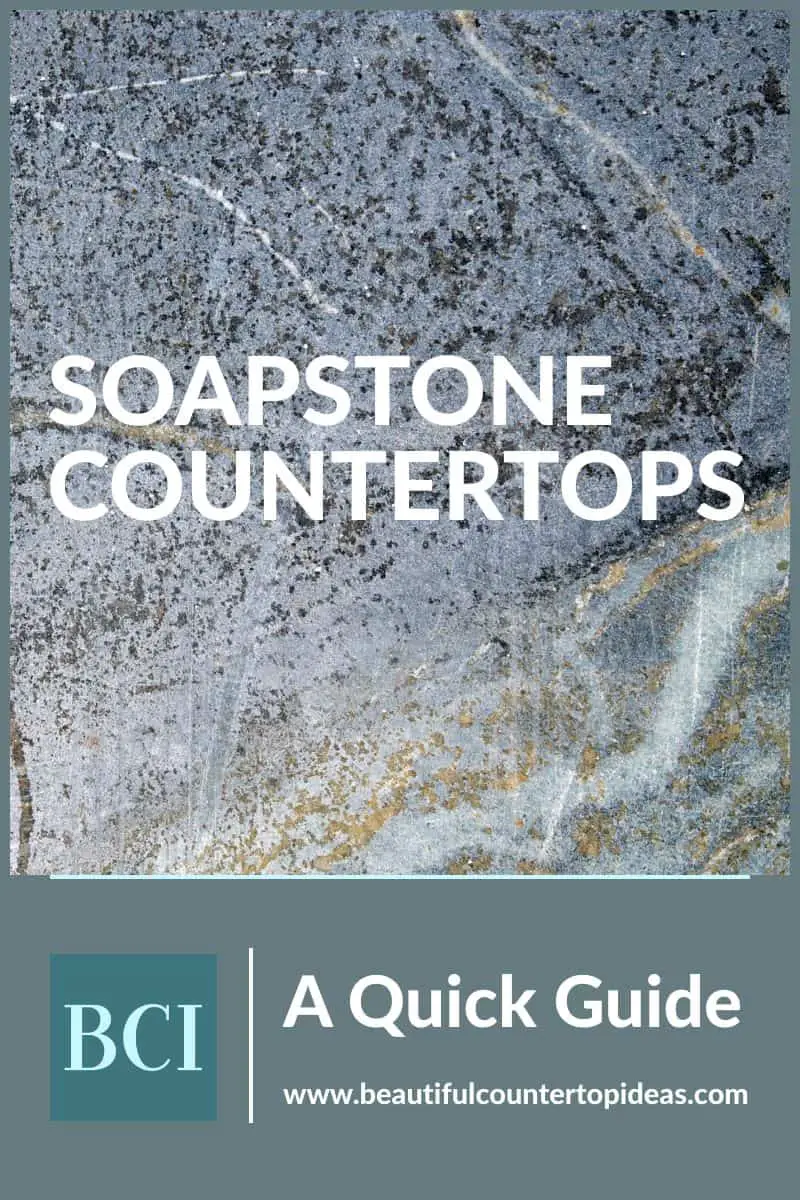Flashback to high school science class. The workstations were probably covered with a dark stone material that handled all kinds of teenage abuse. Both accidental and intentional. Everything from spilled hydrochloric acid to a knocked over bunsen burner. Imagine the abuse those countertops took, and yet they lasted for years. In all likelihood, they were soapstone countertops.
Now, imagine that durability in a hard working kitchen. Sounds perfect, doesn’t it?

The Basics of Soapstone Countertops
Knowing how a natural stone was formed millions of years ago, can go a long way towards understanding how it will perform as a countertop. Soapstone is a metamorphic rock, made primarily from the mineral talc. Metamorphic means that heat and pressure from the earth has changed the stone into an extremely hard material. (See, learning those science definitions finally paid off!) The talc in the stone can give the it a soft and soapy feeling, hence the name.
Soapstone comes in a variety of hardnesses, and it really depends on the amount of talc in the stone. High amounts of talc are rather soft and are usually used for carving. Lower amounts of talc mean the stone is harder and therefore a great choice for countertops.
Soapstone counters are the only naturally non-porous stone available. They are anti-microbial, which makes them a great option for kitchens and bathrooms. Soapstone is impervious to heat and requires very little maintenance. However, it is more likely to experience small chips and scratches. But, like marble, those scratches can create a lovely patina of age.
Soapstone does not need to be sealed, although some homeowners prefer to apply mineral oil or wax to the surface. This increases the contrast by darkening and enhancing the grey color, while leaving the white veins unchanged.
Designing with Soapstone Counters
Soapstone comes in a limited range of colors with shades that fall from the almost black Noire, to the light grey and minimal veining of Alexandria. Beleza, a dark charcoal grey with dark cloud-like green and black patterns, falls somewhat in the middle.
The contrast between the dark background and white veining is what makes soapstone so pretty. Consider using soapstone when selecting a natural stone kitchen island countertop. It can be a real showstopper.
Various countertop edge profiles and surface finishes are available. A honed surface gives a wonderfully, soft matte look, and leathered is excellent at hiding any small scratches and chips.
Soapstone slabs are often slightly smaller than other natural stone slabs. The standard slab length is 7’, but larger slabs can be found. You’ll want to keep that in mind during the design stage, especially when designing a kitchen island. The good news is that soapstone seams are fairly easy to hide, so a larger island is not out of the question.
Is soapstone expensive for countertops?
According to homeadvisor.com, soapstone falls in the $70-120 per square foot range. This puts it towards the higher end of countertop costs, but in the same ballpark as some of the more expensive granites, quartzes, and quartzite. If you’re getting new countertops, our FREE Countertop Costs Calculator can help you figure out if soapstone will fit in your budget.
Do soapstone countertops scratch easily?
Yes, it does scratch rather easily. However, many owners find that the scratches are somewhat “hidden” among the veining, and they may fade with time.
There are two ways of dealing with scratches. The first is the easiest – embrace the scratches as part of the patina and just live with it. If you don’t like the patina, deeper scratches can be sanded out of the countertop.
Do soapstone countertops stain?
Because it is non-porous, soapstone counters do not stain. However, if the counter is in its natural state, temporary stains (especially oil based spills) are more likely to appear. They will eventually fade or can be cleaned with a de-greaser. But, the good news is that the stain will not soak into the counter.
Is soapstone more durable than granite?
Soapstone is not more durable than granite. But, it also doesn’t require the sealing maintenance of granite. Additionally, granite does not have the heat resistance of soapstone. Fortunately, there are several kinds of granite that look like soapstone if your heart (or budget) is set on granite.
Is soapstone good for countertops?
Yes, it is! In my book, if it can handle high school chemistry students then it can handle anything in a family kitchen. The fact that it’s durable, anti-microbial, heat resistant and requires little maintenance makes it a winner.
Soapstone counters can give you the best of both worlds: beauty and durability. This makes them a great option for use in the home. We’d love to hear your opinion – drop us a comment!
Pin this for later:
